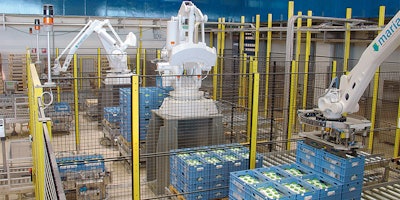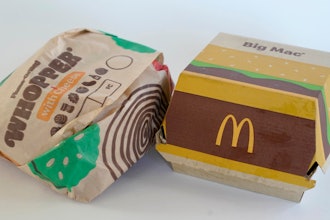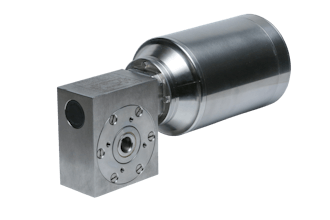
 Alan Spreckley
Alan SpreckleyThe technological and social revolutions of the past few decades have completely reshaped industry. The food packaging and palletizing industry is no exception. In fact, the last ten years alone has seen the adoption of advanced technologies at an unprecedented rate. Alan Spreckley, robotics food and beverage segment manager, and palletizing robotics expert at ABB, explains how digitalization is repackaging the future of food palletizing.
The last two decades have seen a decline in the nuclear family and a global rise in the number of private households with only a single occupant. In 2014, the UK office of national statistics (ONS) conducted a study that found 28 percent of UK households had only one inhabitant. Likewise, the labor force survey (LFS) showed that one-third of European households are single-person, while the United States has been experiencing a significant increase of single person households since the 1920s.
This growing trend places a higher demand for single-portion servings of pre-prepared and pre-packaged food on the food industry, which makes the packaging and palletizing processes less linear than they have previously been. Similarly, the unstable economy of recent years has nurtured a generation of savvy customers, eager for the special offers and deals that retailers regularly provide, further complicating the palletizing process. This leads to scenarios where manufacturers will be required to change palletizing patterns quickly and cost-efficiently.
To keep pace with this changing demand, plant managers and process engineers must ensure that the palletizing process is as efficient and effective as possible. This means keeping systems maintained and palletizing patterns up-to-date, while minimizing any risk of downtime or hindered performance.
To make these processes easier to manage, plant managers have been increasingly turning to new technological solutions; solutions that are a step beyond the traditional automation systems, or machines that have previously improved industrial performance. In the twenty-first century, digital technologies and software are proving to be the unconventional ally of the modern plant manager.
Virtual Commissioning
Robots have been a staple of the food industry since the 1980s, with most businesses using at least one robotic system for some part of the production line. Palletizing robots have proven particularly popular among plant engineers as they increase productivity, improve working conditions and can be easily integrated into existing production systems.
However, the process of integrating palletizing robots has traditionally relied on computer assisted design (CAD) drawings and involved a lot of estimation. Food plant managers provide approximate dimensions to robot manufacturers for the robot and leave the rest in the hands of the manufacturer, who tests the product in its own facility before finalizing and installing onsite.
While this approach is sufficient for some businesses, it can open up several performance problems. For example, CAD drawings alone do not necessarily provide an accurate representation of the operating environment, and the robots still need to be programmed after installation. This lengthens periods of unproductive downtime to accommodate the placement and programming of a new robot.
To minimize unproductive downtime, the process of virtual commissioning is becoming increasingly popular among plant managers. Instead of using CAD drawings and developing robots in an external environment, the process is modeled in 3D, which provides an accurate visualization of a factory layout. This allows plant engineers to see a digital representation of how the robot will integrate and move within the process, and allows them to discover and resolve any potential technical issues before they become a reality, reducing commissioning time by up to 25 percent.
For example, one of the most common causes of damage to palletizing robots is collision with a cell’s support pillar during operation. By using a virtual commissioning platform, these instances of collision can be fully discovered and resolved in a time- and cost-efficient manner on the computer. This helps minimize the actual, physical commissioning.
 (Photo courtesy of ABB)
(Photo courtesy of ABB)Remote Condition Monitoring
Once commissioned, robots are machines like any other and they are susceptible to component wear over time. As such, regular maintenance is required to ensure that everything is functioning effectively and safely.
This doesn’t pose much of a problem for plants that are ahead of the curve and running on an Industrial Internet of Things (IIoT) network. IIoT allows engineers to access cloud data to assess the performance of machinery remotely and schedule maintenance work accordingly. This level of information provides plant engineers with advance notice when service is required. Plant managers can then resolve this with maintenance work before breakage or unproductive downtime occurs.
Real-Time Offline Programming
While virtual commissioning and remote monitoring technologies both keep factories running, it is the development of offline programming software that yields efficiency benefits for plant managers. This is software that allows the remote programming of palletizing robots without interrupting production.
For example, if a retailer usually asks for four-packs of tinned soup but decides to offer a 50 percent-extra-free offer for a period of time, the palletizing robot will be required to change palletizing patterns accordingly. Failure to do this effectively could result in businesses being unable to supply a sufficient amount of product to retailers, which leads to lost contracts and the risk of heavy supplier fines.
Plant managers can prevent this by digitally reprogramming palletizing robots using offline software, which can be accessed using a standard PC to change palletizing patterns. This reduces the time taken to change over and boosts overall productivity to ensure that demands are met.
In the nineteenth and twentieth centuries, the automotive sector was one of the most technologically advanced and adaptive industries. If the past decade is anything to go by, the food industry is quickly building a similar reputation. By thinking more about digital solutions to production problems, plant managers can ensure that food processing becomes the automotive industry of the modern age, easily coping with the demands of the nuclear family and single-occupier households.























